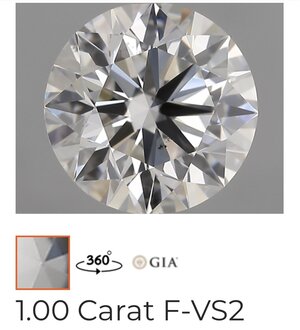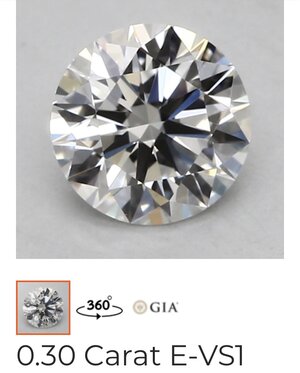candyfloss
Rough_Rock
- Joined
- Apr 20, 2021
- Messages
- 52
A 34.5/40.8 0.7-0.8ct stone with 80% lowers and a 56% table! Oh those proportions… you’re right it’s pretty much smack in the zone of what I’m looking for! Let me get this to my jeweller and see if they can get their hands on it if only for a point of comparison. If only the vendors they worked with carried stones of such great proportions instead of a bunch of 60/60s. Thank you sledge!!





300x240.png)